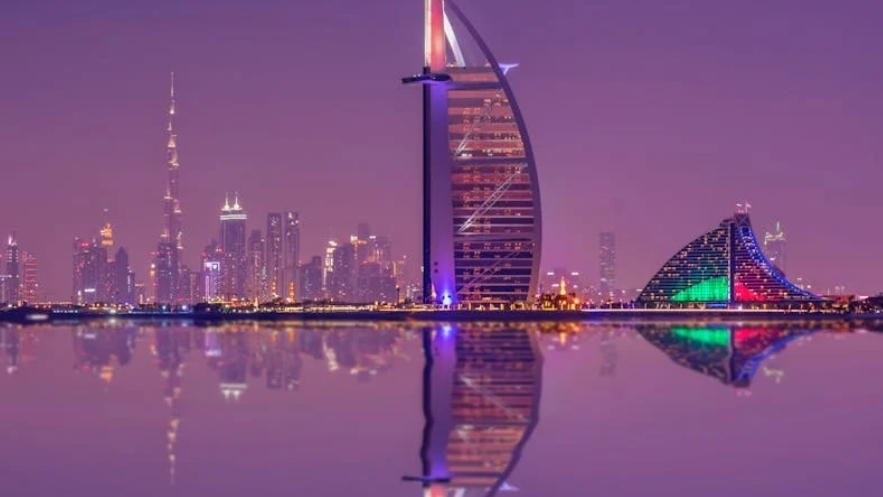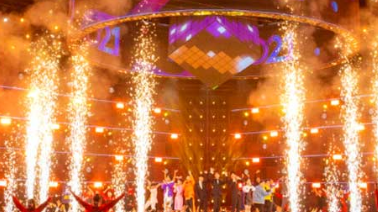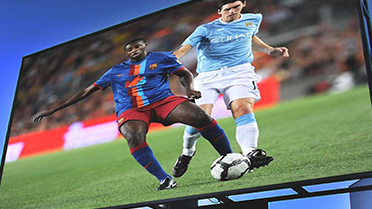




The LED displays at the music festival ignited the passion of the crowd. Thousands of music fans gathered to enjoy the musical extravaganza, and the LED displays added even more color to the celebration.The LED displays showcased information such as the festival lineup and performance times. Fans could check the schedule and ensure they didn't miss their favorite bands and artists. The displays could also play videos and images of the bands and artists, giving fans a preview of their performances.During the performances, the LED displays displayed dazzling light effects and synchronized with the music's rhythm, creating a vibrant atmosphere. As the music tempo increased, the lights on the displays became more dynamic and dynamic.Furthermore, the LED displays allowed for interaction with fans. Fans could send messages and blessings via their mobile phones, which were then displayed on the screens. This increased their sense of participation and belonging. At the music festival, the LED
LED displays are a dream partner for stage performances. In stage performances, lighting and background creation are crucial. LED displays, with their powerful functions, add vibrant colors to stage performances.They can display a variety of realistic background images based on the content and plot of the performance. In song and dance performances, displays can show beautiful natural scenery, bustling cityscapes, and more. This makes the actors feel as if they are in different scenes, enhancing the performance's appeal.LED displays can also interact with the actors. In some large-scale performances, the actors' movements can trigger special effects on the display. When an actor jumps, corresponding light and shadow effects appear on the screen. This increases the performance's interest and visual appeal.Furthermore, the high brightness and high contrast of LED displays ensure clear image display under different lighting conditions. The application of LED displays in stage performances
LED displays, as a powerful new tool for brand promotion, possess immense commercial value. The key to brand promotion is attracting consumer attention and conveying brand information and values. With its high brightness, vibrant colors, and dynamic display capabilities, LED displays have become an ideal choice for brand promotion.Installing LED displays in bustling urban areas and transportation hubs allows brand messages to reach a wider audience. By playing attractive brand advertising videos and product introductions, brand awareness and reputation can be enhanced.LED displays also enable precise marketing. Advertising content can be adjusted based on different time periods, locations, and target audiences. Displays near schools can play product advertisements targeting students, while displays in commercial areas can display advertisements for high-end brands.Furthermore, the remote control and timed playback functions of LED displays make brand promotion more convenient and effic
LED displays are boosting e-commerce live streaming, driving sales to new heights. In e-commerce live streaming, hosts need to showcase the details and features of products. The high definition and color reproduction of LED displays make product displays clearer and more realistic. Viewers can see the materials, workmanship, and colors of the products more clearly.Hosts can use LED displays to demonstrate how to use and how the products work. For example, a cosmetics host can demonstrate the makeup process, and a clothing host can demonstrate how the clothing looks when worn. This allows viewers to better understand the products and increases their desire to buy.LED displays can also show real-time sales data and promotional information. Viewers can see product sales, inventory, and current promotional activities. This creates a sense of urgency, prompting viewers to place orders quickly. Furthermore, LED displays enable interaction with viewers. Hosts can see viewer comments and quest
LED displays enhance the commercial appeal of auto shows. At auto shows, numerous car brands showcase their products. The application of LED displays makes these displays more vivid and engaging. Installing LED displays at car booths allows for the playback of promotional videos, performance parameters, driving experiences, and other content. This enables visitors to gain a more comprehensive understanding of the car's features and advantages.The high brightness and large size of LED displays attract more visitors. Compared to traditional display methods, dynamic visuals are more likely to capture people's attention. Auto show organizers can also use LED displays to create a unique atmosphere. Playing videos of cars driving under different road conditions allows visitors to feel as if they are actually there.Furthermore, LED displays can achieve multi-screen interaction. Setting up multiple displays at the auto show site simultaneously showcases different cars and related information.
Installing LED displays can make a restaurant's business boom a reality. An LED display at the restaurant entrance can showcase signature dishes, special offers, and other information, attracting passersby and drawing more people into the restaurant.Inside the restaurant, LED displays can create a unique dining atmosphere. Playing food videos, soothing music, and natural scenery can enhance the dining experience for customers. In Western restaurants, elegant classical music and romantic landscape videos can create a romantic ambiance. In Chinese restaurants, lively folk videos and cheerful music can add a festive touch.Restaurants can also use LED displays to interact with customers. Hosting interactive games or prize draws allows customers to participate, increasing their dining experience and improving satisfaction and loyalty. LED displays provide restaurants with a brand-new marketing and service platform, helping them attract more customers and boost their business.
LED displays are a secret weapon for trade show marketing. At trade shows, numerous companies vie for visitors' attention. LED displays, with their unique advantages, have become key to helping companies stand out.First, LED displays can showcase rich content. Companies can play product introduction videos, corporate promotional videos, case studies, and more. This is more vivid and intuitive than traditional display boards and brochures. Visitors can quickly understand a company's core products and advantages.Second, the dynamic display effects of LED displays attract more attention. Compared to static displays, dynamic images are more likely to capture visitors' interest. Companies can also adjust the displayed content based on different time periods and visitor feedback.Furthermore, LED displays can be remotely controlled and multi-screen linked. Companies can update the content on their displays in real time at the trade show, or have multiple displays simultaneously show different
Large LED displays have become a new focal point for attracting customers to shopping malls. Installing large LED displays in prominent locations such as the mall's atrium and entrances can attract a large number of customers' attention. High-brightness and large-size displays can showcase stunning visuals, leaving a lasting impression on customers.Malls can use LED displays to play various content, such as trailers for popular movies, fashion show videos, and promotional information. Movie trailers can attract movie lovers, fashion show videos can create a fashionable atmosphere, and promotional information can entice customers to make purchases.Large LED displays can also achieve multi-screen interaction. Installing multiple displays on different floors and in different areas of the mall, simultaneously playing the same or related content, can create a unified atmosphere, making customers feel an omnipresent attraction within the mall.Furthermore, malls can use LED displays to intera
LED displays play a vital role in helping companies significantly upgrade their brand image. A company's brand image is a crucial asset, and LED displays can showcase its brand characteristics and culture in various ways.In a company headquarters or showroom, installing large LED displays can demonstrate the company's development history, product advantages, and innovative achievements. Vivid visuals and videos allow visitors to gain a more intuitive understanding of the company, helping to enhance its image in the eyes of customers and partners.When participating in various exhibitions, LED displays can become the highlight of a company's booth. By displaying attractive advertising videos and product images, they can attract more visitors. Compared to competitors, booths using LED displays are more eye-catching and increase the company's exposure.Companies can also install LED displays in office buildings, factories, and other locations to showcase their values, employee achievements,